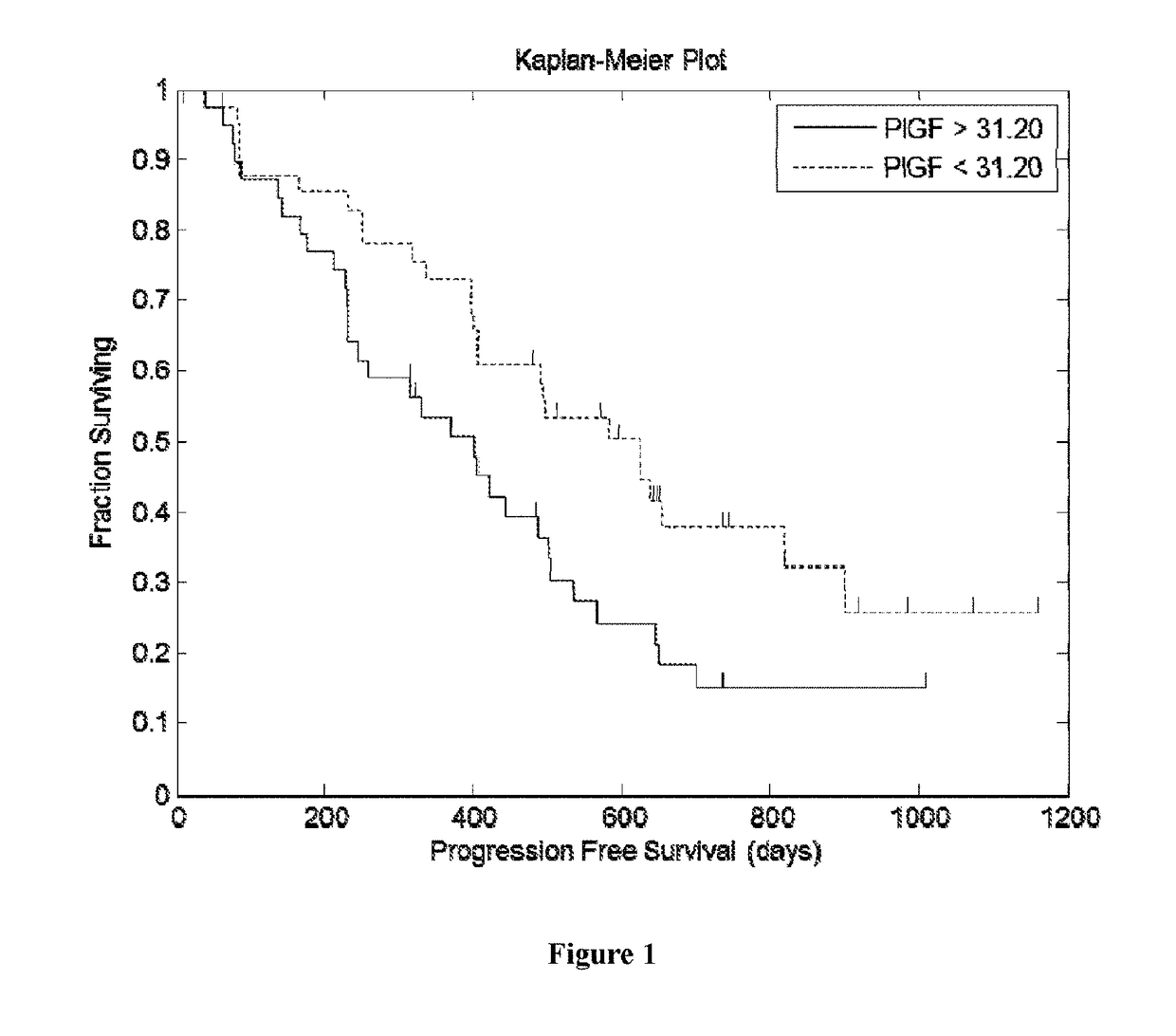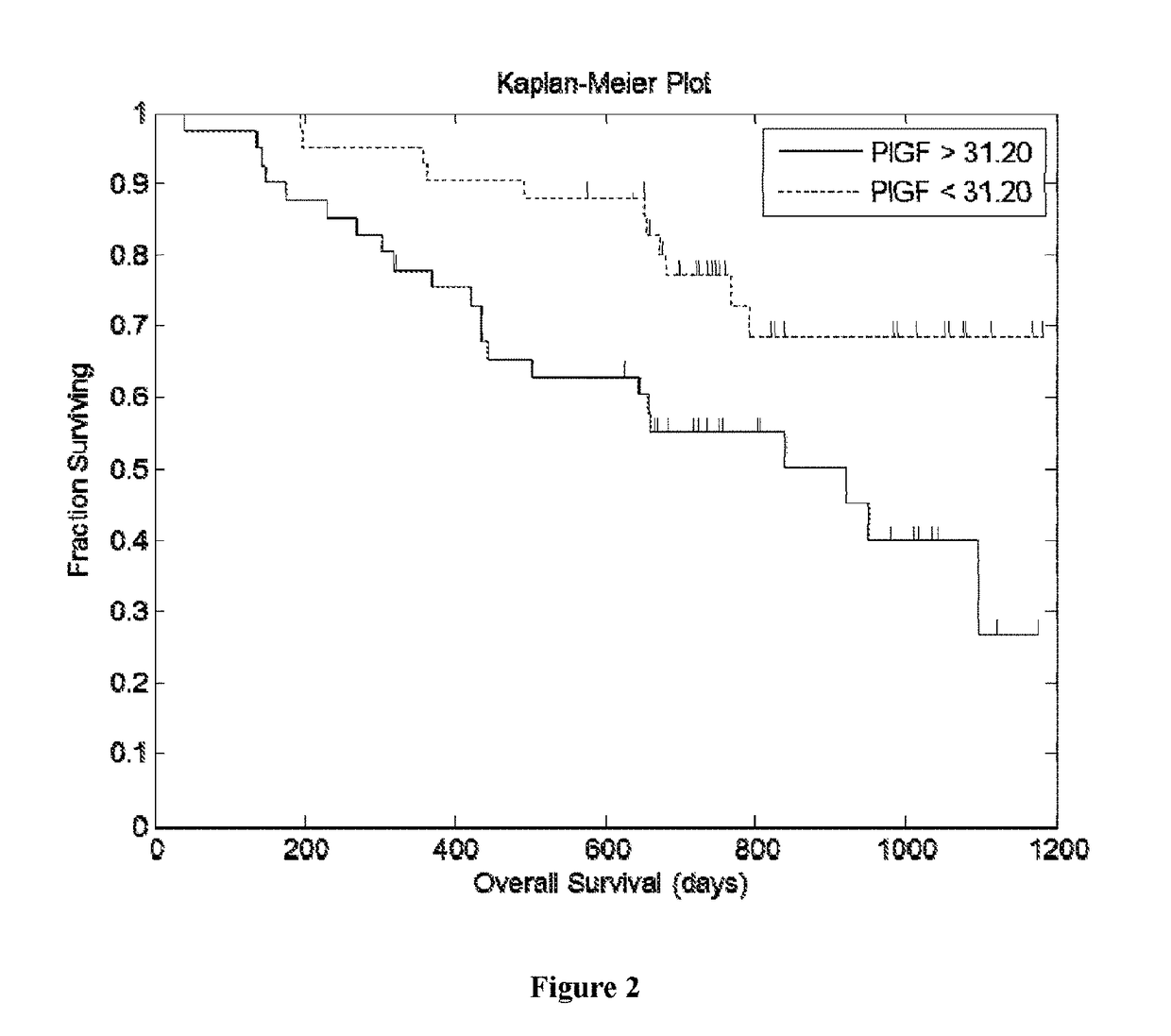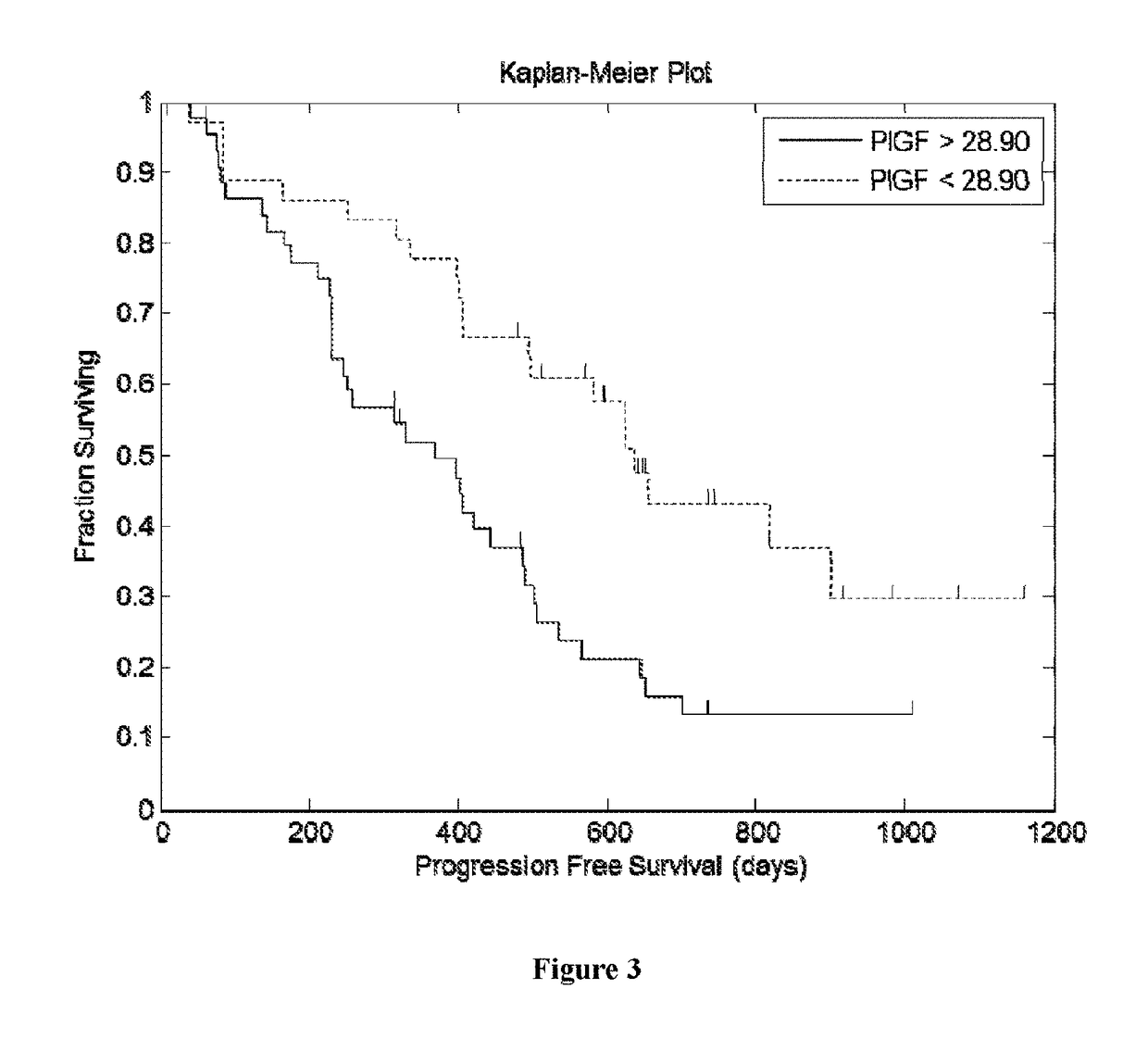Biomarker of Survival in the Treatment of Renal Cell Carcinoma with a VEGFR Inhibitor and an Ang2 Inhibitor
a technology of vegfr inhibitor and ang2 inhibitor, which is applied in the direction of instruments, drug compositions, peptide/protein ingredients, etc., can solve the problems of insufficient amount of diffusion-related elements, increase in the rate of rcc-related mortality,
- Summary
- Abstract
- Description
- Claims
- Application Information
AI Technical Summary
Benefits of technology
Problems solved by technology
Method used
Image
Examples
example 1
[0105]This Example describes a Phase 2, open label, multi-center study to estimate the efficacy and evaluate the safety and tolerability of trebananib in combination with sunitinib in the treatment of subjects with advanced clear cell carcinoma of the kidney. A more complete description of the study design is disclosed at clinicaltrials.gov, the disclosure of which is incorporated herein by reference.
[0106]The number of patients to be enrolled was approximately 80. Patients eligible for the study were at least 18 years of age. Both genders were eligible although no healthy patients were eligible. The primary objective was safety and tolerability, while the secondary outcomes included objective response rate, duration of response, PFS, OS and change in continuous measures of tumor burden.
ARMSASSIGNED INTERVENTIONSARM A:Drug: trebananibExperimental Interventions:10 mg / kg IV (intravenous) weeklyDrug: trebananibuntil unacceptable toxicity or diseaseDrug: SunitinibprogressionDrug: Suniti...
example 2
[0126]This example describes an analysis of the relationship between patient PLGF concentration and PFS (progression free survival) of patients enrolled in the phase 2 study described in Example 1.
[0127]Renal cancer patient's circulating levels of protein placental growth factor (PLGF) was analyzed along with a number of other analytes to determine if it was predictive of how well they will respond after treatment with trebananib and sunitinib. In a clinical trial (Example 1), patients with renal cancer were treated with 50 QD (once a day) sunitinib and either 10 mg / kg QW (once a week) trebananib or 15 mg / kg QW trebananib. Serum samples were collected prior to treatment (baseline) and used to measure circulating levels of the protein PLGF. The baseline patient PLGF concentration was analyzed to determine if it was informative of how well the patient would respond to the treatment regimens.
[0128]The patients PLGF concentrations were determined and tested for statistical association w...
PUM
| Property | Measurement | Unit |
|---|---|---|
| Mass | aaaaa | aaaaa |
| Concentration | aaaaa | aaaaa |
| Concentration | aaaaa | aaaaa |
Abstract
Description
Claims
Application Information
 Login to View More
Login to View More - R&D
- Intellectual Property
- Life Sciences
- Materials
- Tech Scout
- Unparalleled Data Quality
- Higher Quality Content
- 60% Fewer Hallucinations
Browse by: Latest US Patents, China's latest patents, Technical Efficacy Thesaurus, Application Domain, Technology Topic, Popular Technical Reports.
© 2025 PatSnap. All rights reserved.Legal|Privacy policy|Modern Slavery Act Transparency Statement|Sitemap|About US| Contact US: help@patsnap.com



